| Date | Text | |
|---|---|---|
15 Aug 1559

Tristán de Luna y Arellano |
Tristán de Luna y Arellano (exploration) Led by Don Tristán de Luna y Arellano, a Spanish missionary colony of 1500 men on thirteen ships arrives from Vera Cruz at Pensacola Bay, founding the first European settlement on the mainland United States. On September 19, the colony is decimated by a hurricane. |
|
15 Aug 1666

Adam Schall von Bell |
death Adam Schall von Bell Died 15 Aug 1666 at age 75 (born 1 May 1591). German missionary and astronomer, a Jesuit, who in China (from 1619) revised the Chinese calendar, translated Western astronomical books and was head of Imperial Board of Astronomy (1644-64). He became a trusted adviser (1644-61) to Emperor Shun-chih, first emperor of the Ch'ing dynasty (1644-1911/12) who made him a mandarin. He lost power after the emperor's death (1661). Although then tried (1664) and convicted for plotting against the emperor and state, his sentence was commuted. |
|
15 Aug 1758

Pierre Bouguer |
death Pierre Bouguer Died 15 Aug 1758 at age 60 (born 16 Feb 1698). French physicist whose work founded photometry, the measurement of light intensity. He was a child prodigy, a professor at age 15, following his father, Jean Bouguer, in hydrography - the study of bodies of water, both salt and fresh. He participated on the expedition to Peru (1735-44) to measure an arc of the meridian near the equator. In 1729, he invented a photometer to compare the intensity of two light sources illuminating separate halves of translucent paper. The eye itself, he determined, could not be used as a meter, but could establish the equality of brightness of adjacent surfaces. He determined the sun was 300 times brighter the moon. Bouguer's law gives the attenuation of a beam of light by an optically homogeneous (transparent) medium. |
|
15 Aug 1794

Elias Fries |
birth Elias Fries Born 15 Aug 1794; died 8 Feb 1878 at age 83. who was one of the fathers of mycology, who developed the first system used to classify fungi, which had been an area of difficulty and confusion in the pre- Darwin era. His interest in the subject began as a school-boy. His three-volume work, Systema mycologicum (1821-32) remains an important source for nomenclature. The major taxonomic characteristics he applied were spore color and arrangement of the hymenophore (such as smooth surfaces, lamellae, folds, tubes, or toothlike). He also investigated algae and lichens, and published works to educate lay persons. |
|
15 Aug 1794

Elias Magnus Fries |
birth Elias Magnus Fries Elias Magnus Fries, botanist (died 1878) |
|
15 Aug 1796

John Torrey |
birth John Torrey Born 15 Aug 1796; died 10 Mar 1873 at age 76. American botanist and chemist known for his extensive studies of North American flora. The first professional botanist in the New World, Torrey published extensively on the North American flora, advocated the "natural system" of classification that was replacing Linnaeus' artifical system, and collaborated for many years with his student Asa Gray (who was to become an important botanist). Torrey never was able to make a living from botany and worked (among other things) as a freelance chemical analyst. Unidentified plants collected on government expeditions to the western states were sent to him for study, however, as a foremost authority of his time. A genus of evergreen trees, Torreya, is named for him. |
|
15 Aug 1835

Rotary washing machine |
Rotary washing machine In 1835, a U.S. patent was issued for a rotary washing machine to C. H. Farnham (issued without number, known as 8993X). A hand-turned crank rotated a perforated cylinder within a covered wooden shell. Clothes were put inside the cylinder through a hatch in the shell and a removeable panel in the cylinder. This was not the first patent for a washing machine issued in the U.S. - the earliest patent was granted 3 Mar 1797 to Nathaniel Briggs of New Hampshire for "an improvement in washing clothes." |
|
15 Aug 1836

R. J. Lechmere Guppy |
birth R. J. Lechmere Guppy Born 15 Aug 1836; died 5 Aug 1916 at age 79. Robert John Lechmere was an English civil engineer, geologist, conchologist and paleontologist whose name was given to the guppy fish, a small livebearer. After discovering the fish in Trinidad, he sent specimens to the British Museum, where the curator assigned it a species name of gupppii. The common name of the fish continues to be used even though the scientific name for the fish was changed (in part, because another naturalist made an earlier discovery of a similar fish in Venezuela). Guppy moved to Trinidad in 1839 where he pursued a career in public service. His efforts led to the introduction to the island of telegraph service (1868) and a railway (1876). After this, he was mayor of San Fernando for several years. |
|
15 Aug 1848

Dental chair patent |
Dental chair patent In 1848, the first U.S. patent for a surgical or dental operating-chair with adjustable elevation and tilt of the seat and back was issued to M.W. Hanchett of Syracuse, N.Y. (No. 5711). The chair included a footrest with adjustable elevation. |
|
15 Aug 1852
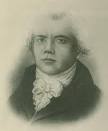
Johan Gadolin |
death Johan Gadolin Died 15 Aug 1852 at age 92 (born 5 Jun 1760). Finnish chemist who discovered the element yttrium (1794). This was the first of a family of 15 rare earth elements called the lanthanides. He studied in Uppsala, Sweden, and taught chemistry there (1797-1822) and promoted Antoine Lavoisier's discoveries about combustion and his system of chemical nomenclature. In analysing a new black mineral from Ytterby, Sweden, he isolating from it the rare earth mineral, yttria. This was an important step towards identifying the remaining undiscovered elements. Over the next century yttria was found to contain the oxides of nine new rare earth elements. After Gadolin's death, one discovered by Jean Charles Galissard de Marignac and Paul Emile Lecoq de Boisbaudran, was named gadolinium. |
|
15 Aug 1856

William Buckland |
death William Buckland Died 15 Aug 1856 at age 72 (born 12 Mar 1784). English pioneer geologist and minister, known for his effort to reconcile geological discoveries with the Bible and anti-evolutionary theories. |
|
15 Aug 1857

Mont Cenis tunnel authorized |
Mont Cenis tunnel authorized In 1857, a bill was passed by the Italian parliament authorizing the boring of the Mont Cenis Tunnel 8 miles through the Alps between Modane and Bardonnêche. Two weeks later, the first blast was fired on the Italian side by King Victor Emmanuel. During 1858 with only hand drilling methods only 1,506 feet was excavated, total, from both ends. However, in 1861, French engineer Germain Sommeiller introduced pneumatic drills capable of 200 strokes per minute which increased progress by 3½ times to 5,364 -ft in 1870. A wheeled carriage on rails carried up to nine air-driven perforators that drilled a pattern of holes for blasting the rock face. Compressor plants at each end were water powered. When opened on 17 Sep 1871, this triumph of engineering was the world's first important mountain tunnel.* |
|
15 Aug 1865

Hantaro Nagaoka |
birth Hantaro Nagaoka Born 15 Aug 1865; died 11 Dec 1950 at age 85. Japanese physicist who was influential in advancing physics in Japan in the early twentieth century. In 1904, he published his Saturnian model of the atom, inspired by the rings around the planet Saturn. He placed discrete, negatively charged electrons of the same tiny mass, spaced in a ring revolving around a central huge positive spherical mass at its centre. Considering the electrostatic forces, hee made a mathematical analogy to Maxwell's model of the stability of the motion of Saturn's rings in a huge central gravitational field. However, Nagaoka's theory failed in other ways, and he sidelined it in 1908. |
|
15 Aug 1871

Arthur Tansley |
birth Arthur Tansley Arthur Tansley (died 1955), English botanist and ecologist. |
|
15 Aug 1877

Hello |
Hello In 1877, Thomas Edison coined the telephone greeting "Hello." He suggested the use of "Hello" to the president of the Telegraph Company to answer the phone instead of "Ahoy, ahoy" suggested by Alexander Bell. |
|
15 Aug 1884

Julius Cohnheim |
death Julius Cohnheim Died 15 Aug 1884 at age 45 (born 20 Jul 1839). Julius Friedrich Cohnheim was a German pioneer of experimental pathology who helped determine the morbid changes that occur in animal tissue affected by inflammation, tuberculosis, and other disease states. He demonstrated that inflammation was an active dynamic process. He was the first to scientifically classify tumors the way we still do today (ex. carcinomas, fibroma, sarcoma). Cohnheim proposed the first great theory of cancer's origin, the theory of embryonal rests. He thought more germ cells are produced with a developing embryo than are needed to form any given part and that cancer's development involves this excess material. |
|
15 Aug 1885
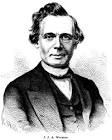
Jens Jacob Asmussen Worsaae |
death Jens Jacob Asmussen Worsaae Died 15 Aug 1885 at age 64 (born 14 Mar 1821). Danish archaeologist, a principal founder of prehistoric archaeology. His Danmarks Oldtid oplyst ved Oldsager og Gravhøie (1843; The Primeval Antiquities of Denmark) was one of the most influential archaeological works of the 19th century. |
|
15 Aug 1887

Julius von Haast |
death Julius von Haast Julius von Haast (born 1824), German geologist. |
|
15 Aug 1888
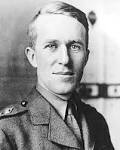
T. E. Lawrence |
birth T. E. Lawrence Born 15 Aug 1888; died 19 May 1935 at age 46. Thomas Edward (T.E.) Lawrence was a British archaeological scholar, also known as “Lawrence of Arabia,” was a British archaeological scholar, which activity he pursued assiduously from his teens up to the outbreak of WW I. In two of his important projects, he collaborated with Leonard Woolley in the British Museum Expedition excavating Carchemish, (1910-14) a Hittite city on the upper Euphrates; and in the Survey of the Wilderness of Zin. Later he became best known as a military strategist, and author for his legendary war activities in the Middle East during WW I, and for his account of those activities in The Seven Pillars of Wisdom (1926). He died in England from injuries sustained in a motorcycle crash near his home in Dorset. |
|
15 Aug 1890

Elvin Morton Jellinek |
birth Elvin Morton Jellinek Born 15 Aug 1890; died 22 Oct 1963 at age 73. Elvin Morton Jellinek was an American physiologist who was a pioneer in the scientific study of the nature and causes of alcoholism and in descriptions of its symptomatology. He was an early proponent of the disease theory of alcoholism, arguing with great persuasiveness that alcoholics should be treated as sick people. Jellinek gathered and summarized his own research and that of others in the important and authoritative works Alcohol Explored (1942) and The Disease Concept of Alcoholism (1960). In the latter book, Jellinek also recognized that some features of the disease (e.g., inability to abstain and loss of control) were shaped by cultural factors. |
|
15 Aug 1891

Tor Bergeron |
birth Tor Bergeron Born 15 Aug 1891; died 13 Jun 1977 at age 85. Tor Harold Percival Bergeron was a Swedish meteorologist best known for his work on cloud physics. He was the first meteorologist to take into account the upper atmospheric phenomena and their effect on climate. He demonstrated that raindrops can form in the upper parts of clouds, which contain little liquid water, through the growth of ice crystals. This happens at temperatures between -10°C and -30°C (14°F and -22°F) and is known as the Bergeron process. Work done in the 1930s by Tor Bergeron and W. Findeisen led to the concept that clouds may contain both supercooled water and ice crystals. This led further to the concepts of “warm rain” and “cold rain.” |
|
15 Aug 1892

Prince Louis-Victor de Broglie |
birth Prince Louis-Victor de Broglie Born 15 Aug 1892; died 19 Mar 1987 at age 94. Louis Victor Pierre Raymond duc de Broglie was a French physicist best known for his research on quantum theory and for his discovery of the wave nature of electrons. De Broglie was of the French aristocracy - hence the title “duc” (Prince). In 1923, as part of his Ph.D. thesis, he argued that since light could be seen to behave under some conditions as particles (photoelectric effect) and other times as waves (diffraction), we should consider that matter has the same ambiguity of possessing both particle and wave properties. For this, he was awarded the 1929 Nobel Prize for Physics. |
|
15 Aug 1892

Louis-Victor de Broglie |
birth Louis-Victor de Broglie Louis-Victor de Broglie (died 1987), French winner of the Nobel Prize in Physics (1929). |
|
15 Aug 1893
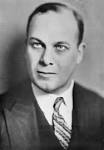
Leslie Comrie |
birth Leslie Comrie Born 15 Aug 1893; died 11 Dec 1950 at age 57. Leslie (John) Comrie was a New Zealand astronomer and pioneer in the application of punched-card machinery to astronomical calculations. He joined HM Nautical Almanac Office (1926-36), where he replaced the use of logarithm tables with desk calculators and punched card machines for the production of astronomical and mathematical tables. This made scientific use of these machines, made originally for only business uses. In 1938, he founded the Scientific Computing Service Ltd., the first commercial calculating service in Great Britain, to further his ideas of mechanical computation for the preparation of mathematical tables. His use of card processing systems prepared the way for electronic computers. |
|
15 Aug 1896

Sheldon Glueck |
birth Sheldon Glueck Born 15 Aug 1896; died 10 Mar 1980 at age 83. Sol Sheldon Glueck and his wife Eleanor were an American criminologists and researchers at Harvard Law School, a husband-and-wife team whose numerous studies of criminal behaviour and of the results of correctional treatment profoundly influenced criminal justice, both legislatively and administratively. In 1940 the Gluecks began work on their best-known study, Unraveling Juvenile Delinquency (1950). This ten-year project addressed the development of criminal careers and involved a detailed examination of 500 delinquents and 500 nondelinquents from disadvantaged neighborhoods in the Boston area. Then, for the next fifteen years, the Gluecks conducted an extensive follow-up of the original sample. |
|
15 Aug 1896

Gerty Cori |
birth Gerty Cori Born 15 Aug 1896; died 26 Oct 1957 at age 61. Gerty Theresa Radnitz Cori was a Czech-American biochemist who met her husband Carl Ferdinand Cori while attending medical school in Prague (married 1920). They decided upon careers in medical research, took positions in America in 1922, and became U.S. citizens in 1928. They both shared the 1947 Nobel Prize in Physiology or Medicine (with Bernardo Houssay). The Coris were recognized "for their discovery of the course of the catalytic conversion of glycogen." After Marie Curie and Irène Joliot-Curie, Gerty was the female Nobelist in science. |
|
15 Aug 1906
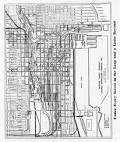
Chicago freight tunnels |
Chicago freight tunnels In 1906, a freight delivery tunnel system, the first in the U.S., began operation underneath Chicago, Illinois, but the whole underground system was not finished until 1 Sep 1907. The finished system was put into operation on 2 Jan 1908. The original franchise was issued to the Illinois Telephone and Telegraph Company, 20 Feb 1899 for carrying telephone and telegraph cables. After about twenty miles of tunnel had been accomplished, funds were exhausted. The concern was sold to a new company, the Illinois Tunnel Company, which obtained powers to handle merchandise and package freight between stores, warehouses and delivery points. |
|
15 Aug 1910

Constantin Fahlberg |
death Constantin Fahlberg Died 15 Aug 1910 at age 59 (born 22 Dec 1850). Russian chemist who, while working for Ira Remsen on coal tar compounds, discovered saccharin (anhydroorthosulphaminebenzoic acid), in a synthesis from toluene. The compound is 220 times sweeter than cane sugar. Initially called benzoic sulphinide, Fahlberg coined the trade name “saccharin” (from the Latin word for sugar). With his uncle, Dr. Adolph List, he established a saccharin factory in in Magdeburg, Germany (1896), known as Fahlberg-List. He obtained a patent in Britain in 1886, and several patents in America. beginning with U.S. No.326,281 (issued 15 Sep 1885). What Fahlberg initially prepared in gram quantities in the laboratory, he turned into a product manufactured in ton quantities, making him wealthy. During the 1960s to 2000, saccharin was suspected as a carcinogen, but is now regarded as safe. |
|
15 Aug 1911

Crisco |
Crisco In 1911, Procter & Gamble Company of Cincinnati, Ohio, introduced Crisco, a hydrogenated shortening to provide an economical alternative to animal fats and butter. To emphasize the purity of the product within, the Crisco can came inside an additional, removable over-wrap of white paper. Crisco, the first solidified shortening product made entirely of vegetable oil, was the result of hydrogenation, a new process which produced shortening that would stay in solid form year-round, regardless of temperature. |
|
15 Aug 1914
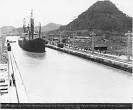
Panama Canal opened |
Panama Canal opened In 1914, the Panama Canal was officially opened by an American ship sailing from the Atlantic to the Pacific Ocean. The United States fomented a rebellion to get the land for this canal...encouraging Panamanians to break away from Colombia. Before the Panama Canal was built, sea trade had to gone all the way around South America's sometimes stormy Cape Horn. The Panama Canal crosses a small mountain range with a series of huge locks. |
|
15 Aug 1915

Amron Harry Katz |
birth Amron Harry Katz Born 15 Aug 1915; died 10 Feb 1997 at age 81. American physicist whose studies in aerial reconnaissance made possible the use of space satellites for collecting military intelligence as well as information to be used in conserving resources and aiding disaster victims. |
|
15 Aug 1927

nbsp;Bertram B. Boltwood |
death nbsp;Bertram B. Boltwood Died 15 Aug 1927 at age 57 (born 27 Jul 1870). Bertram Borden Boltwood was an American chemist and physicist whose studied the radioactivity of uranium and thorium, and their resulting products, which laid a foundation for the concept of isotopes. Boltwood traced each “radioactive series” of radioactive elements in rocks as they sequentially disintegrated into other isotopes or elements. He noted (1905) that the lead, a stable element, always found in such ores, was apparently the ending product of radioactive decay. Since each step in the decay occurs with a known half-life rate, he proposed (1907) that the ratios of the original radioactive elements to their various decay products could be used for dating rocks. Thus, with these measurements of the composition of such ores in the earth's crust, the age of the planet could determined. He estimated 2.2 billion years. Overwork, stress and depression led to suicide. |
|
15 Aug 1929

Sir Edwin Ray Lankester |
death Sir Edwin Ray Lankester Died 15 Aug 1929 at age 82 (born 15 May 1847). British zoologist whose interests embraced comparative anatomy, protozoology, parasitology, embryology and anthropology. He was one of the first to describe protozoan parasites found in the blood of vertebrates. Lankestrella (a parasite related to the causative agent of malaria) carries his name. His work contributed to an understanding of the disease. Based on his investigation into the comparative anatomy of the embryology of invertebrates, Lankester endorsed Darwin's theory of evolution, In anthrolopology, his activities included the discovery of flint implements, evidence of early man, in Pliocene sediments, Suffolk. He was Director of the British Museum of Natural History (1898-1907). |
|
15 Aug 1930

Florian Cajori |
death Florian Cajori Florian Cajori (born 1859), Swiss-born American historian of mathematics. |
|
15 Aug 1932

Robert L. Forward |
birth Robert L. Forward Robert L. Forward (died 2002), American science fiction author and physicist. |
|
15 Aug 1933

Stanley Milgram |
birth Stanley Milgram Stanley Milgram (died 1984), American social psychologist. |
|
15 Aug 1934

Bathysphere record dive |
Bathysphere record dive In 1934, after a series of earlier dives since Jun 1930, each progressively deeper, American zoologist William Beebe and Otis Barton made their pioneering, record-breaking ocean descent of 3,028 feet in a bathysphere designed by Barton. In that instance, the bathysphere withstood over 1,360 pounds of pressure. Beebe began exploring the undersea world with his homemade diving helmet on 9 Apr 1925. William Beebe dreamed of exploring the deeper locations where he and his air hose tether could not reach. Barton read of Beebe's plans in the 1926 Thanksgiving Day edition of the New York Times. Barton had already decided to design a deep sea vessel, had an engineering background, and a substantial inheritance. The two joined forces on 28 Dec 1928. |
|
15 Aug 1935

Wiley Post |
death Wiley Post Died 15 Aug 1935 at age 35 (born 22 Nov 1899). American aviator who was one of the most colourful figures of the early years of U.S. aviation, and set many records. Between 15-22 Jul 1933, Wiley Post completed the first round-the-world solo flight (15,596 miles) in his Lockheed Vega 5B single-engine aircraft Winnie Mae, in 7 days 18-hr 49-min. He had made an accompanied flight around the world in 1931. Wiley Post had made his first solo flight in 1926, the year he got his flying license, signed by Orville Wright, despite wearing a patch over his left eye, lost in an oilfield accident. Post invented the first pressurized suit to wear when he flew around the world. Another credit was his research into the jet streams. He died with his passenger, humorist Will Rogers, 15 Aug 1935, in a plane crash in Alaska. |
|
15 Aug 1947

GLEEP |
GLEEP (physics) 'GLEEP' (the Graphite Low Energy Experimental Pile) experimental nuclear reactor runs for the first time at the Atomic Energy Research Establishment, Harwell, Oxfordshire, the first reactor to operate in Western Europe. |
|
15 Aug 1953
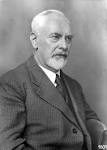
Ludwig Prandtl |
death Ludwig Prandtl Died 15 Aug 1953 at age 78 (born 4 Feb 1875). German physicist who is remembered for his studies of both aerodynamics and hydrodynamics. He established the existence of the boundary layer adjoining the surface of a solid over which a fluid flows. The design of an efficient shape, weight, and mass for ships and aircraft owes much to his work, for which he is considered to be the father of aerodynamics. His made major studies on the effects of streamlining and the properties of aircraft wings. He made improvements to such constructions as wind tunnels. The Prandtl number is a dimensionless group used in the study of convection. The von Karman-Prandtl equation describes the logarithmic variation of water velocity within a channel from zero flow at the stream bed to a maximum velocity at the water surface. |
|
15 Aug 1960

First UK motorway services with restaurant opened |
First UK motorway services with restaurant opened In 1960, the first British motorway services with restaurant opened at Newport Pagnell on the M1 motorway. It was operated by Motorway Services Ltd, a joint venture by Forte and Blue Star. The latter provided the fuel sales. Fortes Grill & Griddle Restaurant spanned the road. It served food with waitress service. The service area was originally intended by the government to be developed for cars only, with another at Watford Gap for lorries only, but opened for all vehicles. The Watford Gap services, although opened earlier (2 Nov 1959, on the same day as the M1 motorway), was unfinished (food sold from temporary sheds) and was not of the conventional design. |
|
15 Aug 1960
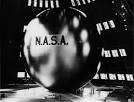
Echo 1 satellite phone link test |
Echo 1 satellite phone link test In 1960, a phone link was tested via the newly launched Echo 1 ballooon satellite on its 31st circuit of the earth. The experiment was conducted by Bell Telephone Laboratories. A call originating via a normal telephone land line to the Jet Propulsion Laboratory at Goldstone, California, was patched into a radio beam bounced off the ten-story satellite balloon in orbit 1,000 miles above the earth. The radio signal was picked up on the other coast at the Bell Laboratory at Holmdel, New Jersey, where it was connected through a conventional telephone exchange to be connected to a receiving telephone. Reception of both a two-way voice conversation and music was satisfactory, and without distortion. The satellite was passive, just a reflector of the radio signal. The New York Times reported the test. |
|
15 Aug 1962

Penumbral lunar eclipse |
Penumbral lunar eclipse (astronomy and space ) Penumbral lunar eclipse. |
|
15 Aug 1967
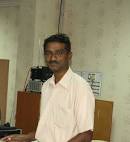
Nicodemus Abel |
birth Nicodemus Abel Nicodemus Abel, Indian Plant geneticist. |
|
15 Aug 1977

Ohio State University Radio Observatory |
Ohio State University Radio Observatory (astronomy and space ) Ohio State University Radio Observatory, working on the SETI project, receives a strong narrowband radio signal from deep space; the event is named the Wow! signal for a notation made by researcher Jerry R. Ehman. |
|
15 Aug 1982

Axel Hugo Teodor Theorell |
death Axel Hugo Teodor Theorell Died 15 Aug 1982 at age 79 (born 6 Jul 1903). Swedish biochemist whose study of enzymes that facilitate oxidation reactions in living cells contributed to the understanding of enzyme action and led to the discovery of the ways in which nutrients are used by organisms in the presence of oxygen to produce usable energy. Theorell won the Nobel Prize for Physiology in 1955 for "for his discoveries concerning the nature and mode of action of oxidation enzymes." |
|
15 Aug 1994

Lowest temperature ever |
Lowest temperature ever In 1994, the National Institute of Standards and Technology (NIST) issued a press release that physicists there recently cooled atoms to 700 nanokelvins, the coldest temperature ever recorded for matter. NIST scientists chilled a cloud of cesium atoms very close to absolute zero using lasers to catch the atoms in an optical lattice. The atoms reached 700 nanokelvins, or 700 billionths of a degree above absolute zero. Zero kelvin (-273ºC), or absolute zero, is the temperature at which atomic thermal motion would cease. Since the late 1970s, physicists have sought to use lasers to cool atoms closer to absolute zero, primarily for improving atomic timekeeping, certain experimental measurements and lithography processes for the semiconductor industry. |
|
15 Aug 2004

Sune K. Bergström |
death Sune K. Bergström Died 15 Aug 2004 at age 88 (born 10 Jan 1916). Swedish biochemist who shared the 1982 Nobel Prize for Physiology or Medicine, (with Bengt Ingemar Samuelsson and John Robert Vane) for the isolation, identification, and analysis of prostaglandins and related biologically active substances. (These biochemical compounds influence such physiological phenomena in mammals as blood pressure, body temperature and allergic reactions.) Bergström purified several prostaglandins and determined their chemical structure. He also showed that prostaglandins are formed from unsaturated fatty acids. Through this discovery the metabolism of unsaturated fatty acids became of major interest in future research. |
|
15 Aug 2006

Voyager 1 |
Voyager 1 In 2006, Voyager 1, the most distant man-made object, reached 100 astronomical units from the sun - meaning 100 times more distant from the sun than is Earth - about 15,000 million km (9,300 million miles) from the sun. At such great distance, the sun is a mere point of light, so solar energy is not an option, but having a nuclear power source, Voyager 1 continues to beam back information. The spacecraft, launched nearly 30 years earlier, on 5 Sep 1977, had flown beyond the outer planets and reached the heliosheath, the outer edge of our solar system, where the sun's influence wanes. Voyager 1 continues traveling at a speed of about one million miles per day and could cross into interstellar space before 10 years later. |